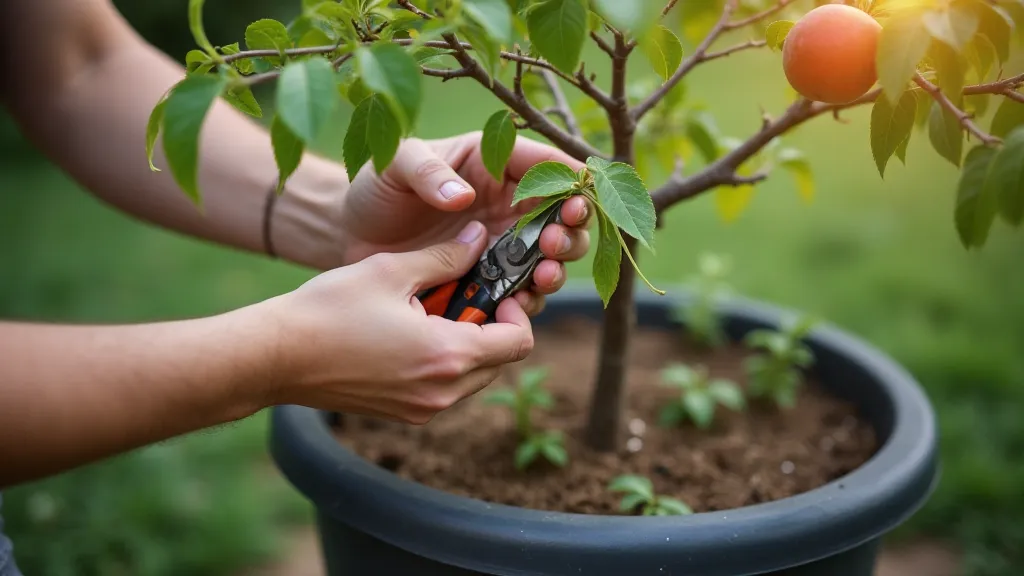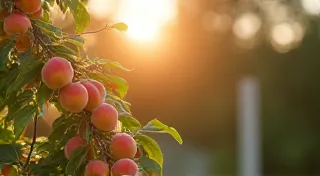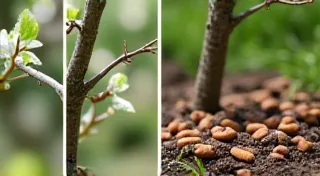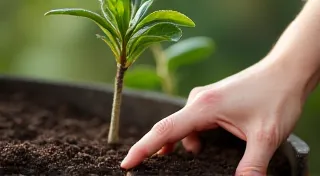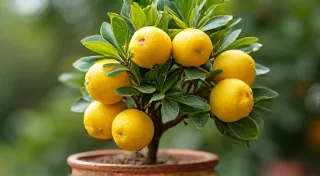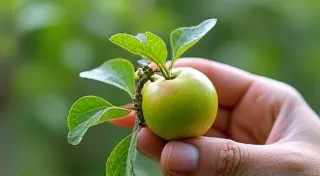The Gnomon's Whisper: Seasonal Rhythms and the Art of Fruitful Constraint
There’s a peculiar melancholy that clings to antique accordions. More than just an instrument, they’re time capsules – resonant echoes of dances long past, of celebrations echoing in grand halls and humble homes alike. Each bellows’ rise and fall speaks of hands, skilled and earnest, coaxing a song from metal and wood. My grandfather, a quiet man of the earth, collected them. Not for show, but for the story they held, the tangible link to a world moving with a different, slower rhythm. It’s that same feeling – of profound connection to the passage of time, and an intimate understanding of constraint – that truly defines the art of growing dwarf fruit trees in containers. It’s not just gardening; it's listening.

The Miniature Orchard: A Heightened Sensitivity
We, in our modern lives, often strive to overcome limitations. We build skyscrapers to pierce the sky, expand our digital reach across continents. But the beauty of container gardening, particularly with dwarf fruit trees, lies in embracing that constraint. These miniature orchards, confined to pots, experience a heightened sensitivity to the seasons. Their small root systems mean they’re acutely responsive to changes in temperature and light. Their limited soil volume demands precise watering and feeding schedules. This isn’t a casual endeavor; it's a partnership, a dialogue with nature.
Consider the history of dwarf fruit trees. For centuries, monks and orchardists in Europe practiced techniques to create smaller, more manageable trees, often grafting scions onto dwarfing rootstock. This wasn't solely about aesthetics; it was about maximizing yields in limited spaces, a necessity in monastic gardens or small estates. That initial impulse – that desire to coax abundance from constraint – resonates deeply with the philosophy of container gardening. It’s about finding a profound respect for the boundaries we impose.
Listening to the Gnomon’s Whisper
The term "gnomon" refers to the part of a sundial that casts a shadow, marking the passage of time. It's a perfect metaphor for understanding these miniature orchards. We’re not just following a calendar; we’re paying attention to the shadow – the subtle cues that reveal what our trees need. What does that whisper sound like?
Firstly, the angle of the sun is paramount. Dwarf fruit trees require ample sunlight – ideally 6-8 hours per day. But it’s not just about *how much* sun they receive, but the *quality* of that light, which changes dramatically throughout the year. In spring, the sun’s angle shifts, triggering bud break. This is the moment to be particularly vigilant about frost protection, as newly emerging leaves are incredibly vulnerable. Likewise, as autumn approaches, the shorter days and lower sun angle signal the need to reduce watering and fertilizing, allowing the trees to prepare for dormancy.
Secondly, observe the soil. Container soil dries out much faster than ground soil, particularly during hot weather. Feel the dryness – a light, airy texture is different from the heavier feel of moisture-retentive soil. Pay attention to the weight of the pot; a light pot indicates a dry root ball. And don't underestimate the power of observation: wilting leaves can be a silent cry for water, but they can also indicate overwatering – a delicate balance to maintain.
Finally, learn to read the leaves. A healthy leaf is vibrant and firm. Yellowing leaves can indicate nutrient deficiencies or overwatering. Bronze or reddish hues can sometimes be a sign of phosphorus deficiency. The subtle changes in leaf coloration are your tree’s way of communicating its needs. It requires dedication and careful consideration.
Craftsmanship and Care: The Accordion’s Parallel
Restoring an antique accordion is a meticulous process. It’s not simply about gluing broken parts; it's about understanding the original craftsmanship, appreciating the materials, and coaxing the instrument back to its former glory. Similarly, growing dwarf fruit trees in containers requires a similar mindset – a dedication to understanding the underlying principles and a willingness to adapt to the tree’s individual needs.
Think about the craftsman who built that accordion - they selected the wood for its resonance, they carefully tuned the reeds, they meticulously assembled each component. We, as container gardeners, should approach our task with the same level of care. Selecting the right potting mix is crucial – a well-draining blend that provides adequate aeration is essential for healthy root growth. Providing proper support for the tree is important, especially as it bears fruit. And choosing the appropriate size pot is vital, allowing for sufficient room for root development without being overly large and prone to waterlogging.
Just as a skilled accordion repairman might replace a worn reed to restore tone, we might need to prune a dwarf fruit tree to maintain its shape and encourage fruiting. These actions aren’t about controlling the tree; they’re about facilitating its natural growth process, guiding it towards its full potential within the confines of its container.
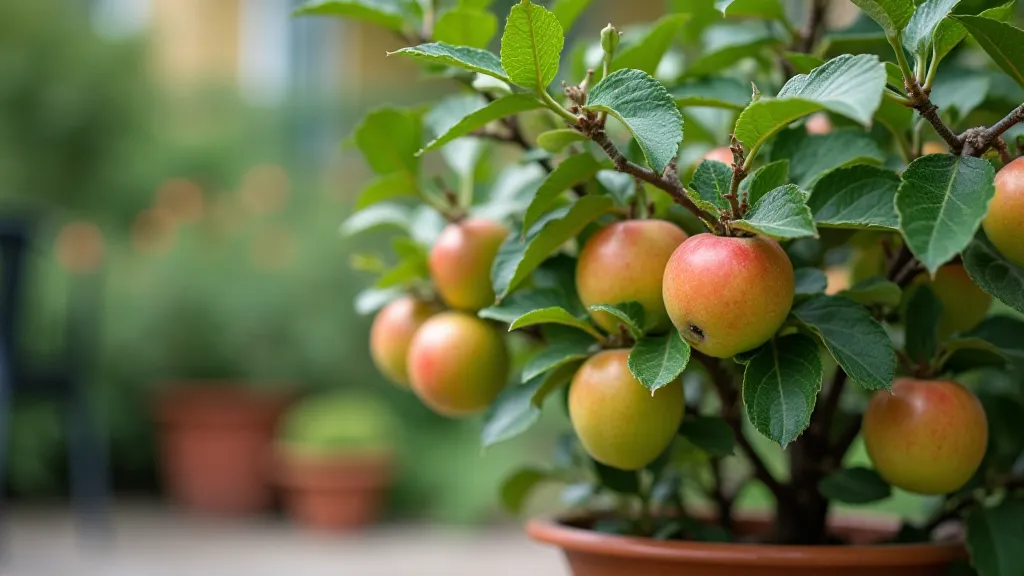
Dormancy and Renewal: The Cycle Continues
The accordion’s beauty isn’s solely defined by its ability to play; it’s also about its resilience, its capacity to withstand the ravages of time and emerge, renewed, for another performance. Dwarf fruit trees, too, require a period of dormancy. This is a time of rest and rejuvenation, a crucial part of their annual cycle. Reducing watering and fertilizing during the winter months allows the trees to conserve energy and prepare for the burst of growth that will follow.
As the days lengthen and the sun’s warmth returns, the gnomen’s whisper grows stronger. The trees awaken from their slumber, eager to produce the fruits of our careful cultivation. This is the moment of reward, the culmination of our efforts. But it’s also a reminder that the cycle is continuous, a perpetual dance between constraint and abundance, between the gardener and the tree – a conversation understood through the subtle language of seasonal rhythms.
The connection between my grandfather’s antique accordions and the vibrant miniature orchards that grace container gardens may seem unusual, but the underlying principle is the same: a deep appreciation for craftsmanship, a profound respect for limitations, and a quiet understanding of the beauty found in listening to the whispers of time.
